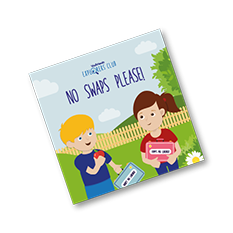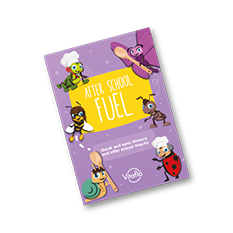By now, your child will have developed their own little personality. With their blossoming identities forming, now is a good time to encourage them to learn more about their PKU.
A good place to start is by involving them in their low protein diet and taking their protein substitute (luckily, at this age they are very keen to help!). If your child is included in the management of their low protein diet from a young age and forms good habits early on, then these will be more likely to continue into adulthood.
Protein is an important nutrient for the human body as it is vital for growth. The protein substitute is essential as it replaces high protein foods that must be avoided and it provides all the amino acids (small units or building blocks) found in protein except for phenylalanine (phe). It also provides vitamins and minerals.
The protein substitute, in combination with a small allowance of regular dietary protein advised by their dietitian, will make sure that your child has enough protein to meet their daily requirement so that they can grow and develop normally
As your child grows, they should become more and more responsible for taking their protein substitute. You can encourage this independence by:
Food is such a big part of all our lives, but especially so for people with PKU. A useful way to get your child to understand about their low protein diet, could be to start your own fruit and vegetable patch. Look out for the tomato seeds we will be sending out for a great way to start!
This is a great way to teach your child where food comes from and generate conversations around their low protein diet and the many types of permitted vegetables and fruits they can eat. You don’t need a garden for this – a planter box or some plant pots on the windowsill is ideal. Some areas have community gardens or allotment sites that you can access as well.
When you start your gardening journey:
Another way to involve your child in their low protein diet is to let them help when you’re doing a supermarket shop. Before you go, get them to create their own low protein shopping list of foods they like from the NSPKU Dietary Information Booklet. This doesn’t need to be written out if they are not yet able, instead they can do some drawings of the low protein items they like and want to buy. They can then tick the items off their shopping list as you go around the supermarket aisles.
You could ask them to look out for the low protein foods that you plan to buy as well, so that they become familiar with recognising the usual low protein foods you have at home. Treat this like a type of treasure hunt to make it more of a game than a chore. Whoever spots the most items first is the winner. This is also a good way to show them the many foods they can eat and enjoy in their low protein diet. If they are at an age when they can read, show them food labels and point out to them where protein is on the nutritional table. This will encourage them to get used to checking labels.
As well as growing your own fruits and vegetables and shopping together for low protein foods, your little ones can start helping to cook with them too. Let them be involved with adult-supervised tasks like washing the fruits and vegetables, peeling and/or chopping them using a child’s knife and placing them into a pan of cold water to be cooked. The more your child is involved in their low protein diet, the more likely they are to be willing to try new things.
Let your child help to choose what low protein meals they would like - you could use a chalkboard or whiteboard or print off a meal planner and you can plan together a week’s low protein menu using pictures or words if your child is able to write. Keep this in the kitchen where it can be a reminder of what your child will be having. This is also a really good way to keep track of what your child is eating and ensuring variety in their meals. Having this meal plan may be a benefit when it comes to food shopping too.
Playtime can be another great way to get your child to explore low protein foods. Encourage them to play kitchens or shop with their dried low protein pasta and rice as well using artificial play food items that are permitted in their low protein diet like apples, bananas, cabbage, lettuce and cucumbers. You could also get some play foods that are counted as phe exchanges, like beans, broccoli, cauliflower and peas. This is a good way to get them to recognise the foods that need to be measured in their diet.
You could wash out an empty protein substitute packet and let them use those as part of their pretend play. They could have a low protein teddy bears picnic with protein substitutes included!
Having a good grasp on their low protein diet and low protein cooking from an early age can help your child stick to their low protein diet. Staying on diet or “Diet for Life“ will help to make sure your child stays healthy, grows and develops normally and performs to their ability. Make sure to chat to your child about how their special diet and protein substitute helps them to:
-Have energy to play.
-Be able to do their schoolwork or preschool activities to the best of their ability.
-Be able to concentrate on story time.





